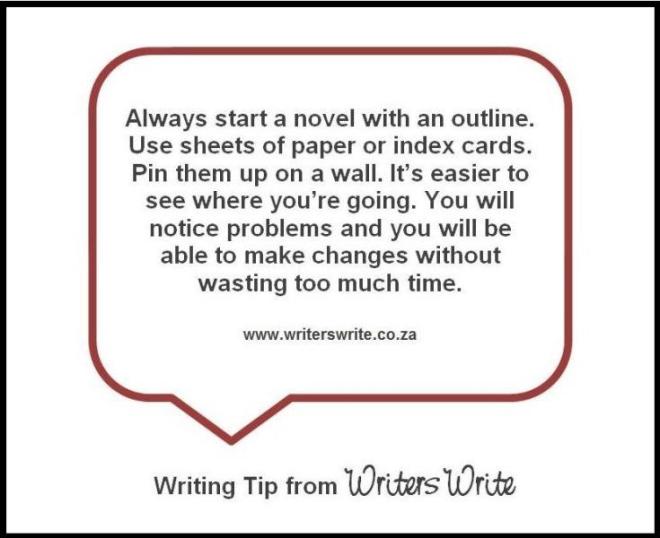Lately, I’ve been dealing with my love/hate relationship with plot and outlines. I recently saw the quote below on a friend’s Facebook page. It came with the accompanied tag: “An outline is meant to be a road map (including detours)… NOT a straitjacket!”
All of my writer spidy senses went into high alert when I read this. Immediately, I felt the need to defend my personal feeling that an outline is like a straitjacket. My mind whirred with reasons: an outline is going to stifle the story! It’s not going to give my characters room to breathe! I’m going to force my characters to do all the things my outline says they must do!
Obviously, outlines are a trigger for me.
I should clarify, when I say outline, I’m thinking about something very detailed. I’ve written 10 to 17 page outlines in the past, cataloging what happens when, where, how, and why. If you say the word outline to me, this is what I think of. Often, when you put that much work into an outline it can feel like the story is set in stone, unmovable, and pre-written. I’ve had to throw away entire projects that came as a result of this type of outlining, and it stole away my sense of discovery during the writing process. Many projects I’ve outlined, I’ve never finished. Hopefully this gives a little insight into why I have such a dramatic reaction to outlines.
But deep down I do think it’s important to have some sense of where your headed – some vague elusive sense, yes.
Let’s return to the quote above, I want to identify exactly why I reacted so negatively to it. The heart of the issue lies in the implication of the following two lines:
1) “Always start a novel with an outline.”
Outlines and a sense of direction are important, but must you always start with one? First drafts (in my opinion) should be about exploration and discovery. Who are your characters? What do they want? What’s the premise and how could it play out? If you have an outline before you have a clear sense of who your characters are – will they even become real people? Or are they doomed to be cogs in your plot machine?
 Are we so afraid of not knowing where we are headed? Outlines give us set destinations, but is there no room to explore with our characters? Is there no room to let our characters come a life and dictate the direction of their own stories? (Be sure to read author Tristan Riehl’s great post about authors not being honest to their character’s stories).
Are we so afraid of not knowing where we are headed? Outlines give us set destinations, but is there no room to explore with our characters? Is there no room to let our characters come a life and dictate the direction of their own stories? (Be sure to read author Tristan Riehl’s great post about authors not being honest to their character’s stories).
Do we lack the faith that our stories will reveal themselves to us if we give them the space to do so? Do we not trust the writing process?
Of course, at some point we will want to look at the big picture and deal with the overall structure and plot. Of course, we will do this! But should we always start the process that way?
I think my big question here is: When is the right time to outline? Not that you should never outline, or that it can’t be a useful tool. But why do we choose to outline at all? At what point in the process should we do it? And what help does it provide? Is always starting with an outline an action done in service of the story or in service of the author?
Which leads me to…
2) “…you will be able to make changes without wasting too much time.”
I have a sneaky suspicion that sometimes an outline exist so we don’t waste time. It exists for the author, so we can be efficient. I get it, time is valuable! There are sacrifices that must be made in order to make time in our lives to write. An outline can be a great tool to keep us on track and moving forward with our stories.
However, just because something is efficient, doesn’t mean it’s effective. It may serve us (the author) and give us a sense of accomplishment. But is it always serving our characters?
What gets lost in the process? What do we rush past and not see?
 You may have heard the story of renowned violinist Joshua Bell, who did an incognito performance in a subway station in 2007. Bell played for 43 minutes during the morning rush hour and was passed by over 1000 people. Only a handful of people (including a child) stopped to hear him play. The rush to get to work, save time and not be late, was a stronger force than the desire to slow down and listen. Very few allowed themselves the space to experience something beautiful and unexpected.
You may have heard the story of renowned violinist Joshua Bell, who did an incognito performance in a subway station in 2007. Bell played for 43 minutes during the morning rush hour and was passed by over 1000 people. Only a handful of people (including a child) stopped to hear him play. The rush to get to work, save time and not be late, was a stronger force than the desire to slow down and listen. Very few allowed themselves the space to experience something beautiful and unexpected.
Are we doing the same thing with our own stories in our mad rush to save time, finish our drafts, and get published? I’ll admit it. I’ve done it. And I had a nice pretty outline to guide my way. I know outlines have kept me from noticing the glorious events on the sidelines, things that would have made my book stronger, more alive, and vibrant. Has a dependency on an outline caused you to have similar blind spots?
Am I saying you shouldn’t outline. No, not at all. I’m saying you should ask yourself what you need from your outline. What’s the right time to use it? And is it a crutch that’s causing you look rush past the true heart of your novel?





Ah yes, the old outline vs. not debate! The most important thing, I believe, is to follow whatever path speaks best for you. I am more inclined to start with an outline, because knowing there is a path in front of me helps me start. THAT SAID, I am quick to follow an unanticipated side road. I also know a lot of successful writers who insist they won’t be handcuffed with an outline, yet when revising will in fact do the kind of thing you’ve discussed here in terms of improving story order, etc. You are absolutely right, of course, to knock the absolutism of that posted advice.
Gosh, I love this post so much. And I watched that Joshua Bell video. He played so beautifully and so many people just ignored him. I’ve written an outline for one book and have had trouble finishing it. I’m pretty much a pantser in my writing. I just plunge in and go. At some point, I might jot down some scenes I want to write. And I usually have an idea where the story might end up. But most of the time, I don’t know until I start writing. My hat is off to people who can work from an outline. I find that I can’t.
Rule two, make your outline one page only.
I agree, you should follow the path that speaks to you. Every writing process is different.
LOL! I’ve heard some people talk about story “sketches” – which is a very vague (probably only a page long) idea of where the story might go. This seems like a more feasible road map to me personally, with lots of room to explore.
Thanks for this. I was determined to write an outline for my WIP. Despite the fact that I’d never done an outline before, I now had a deadline, so I figured I had to have one in order to be more efficient. The result was that my novel wouldn’t even start. I was so overwhelmed with thinking everything through to the end that I couldn’t even get a scene together. The deadline came and went, and I’ve abandoned the outline idea, and now things are going much better.
Ugh, I hate it when people present writing advice as some kind of commandment. I’ve tried outlines and tried not outlining and so far what I like best is just writing a list of the ideas I have for the story because I have so many ideas for scenes without a lot of order to them. It helps me organize them and then I can sit down and explore each idea further in a scene.
I love lists. They are far less intimidating than outlines.
I think we are similar writers Adi!
How true!